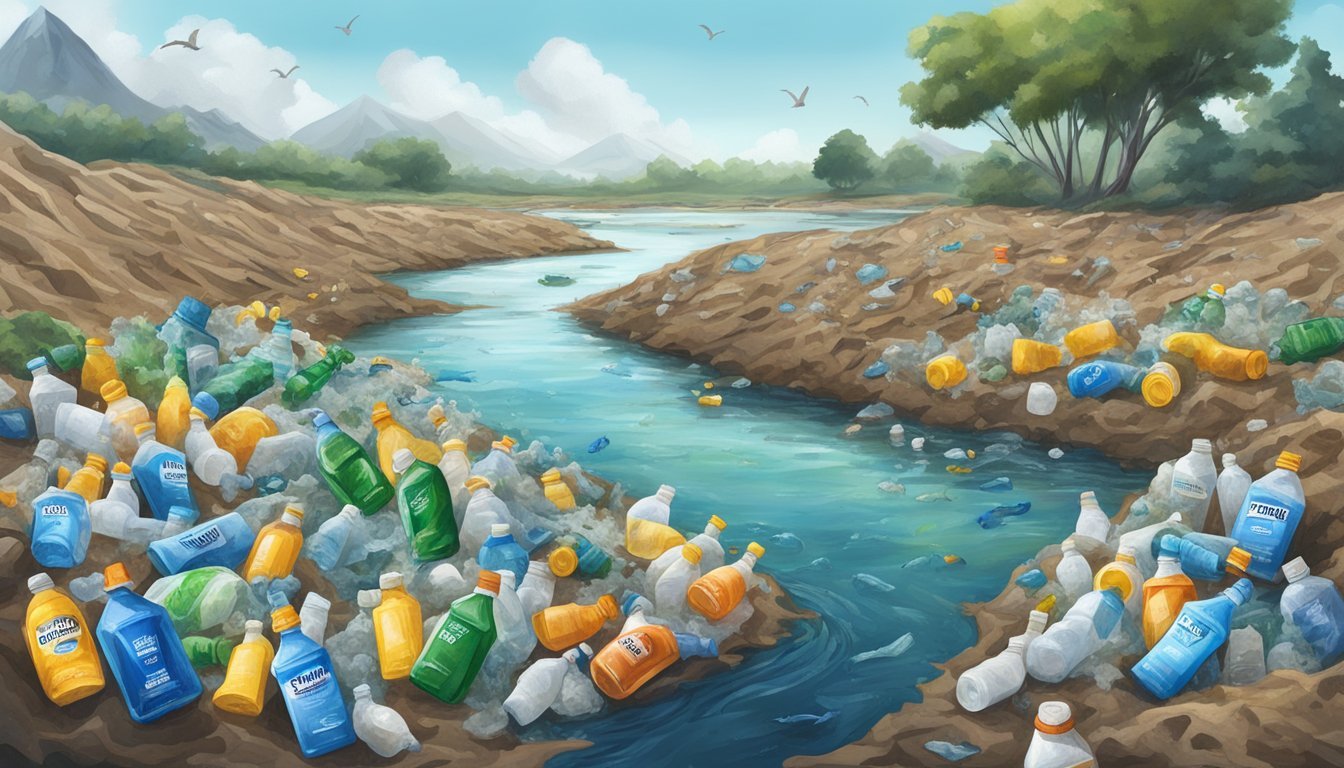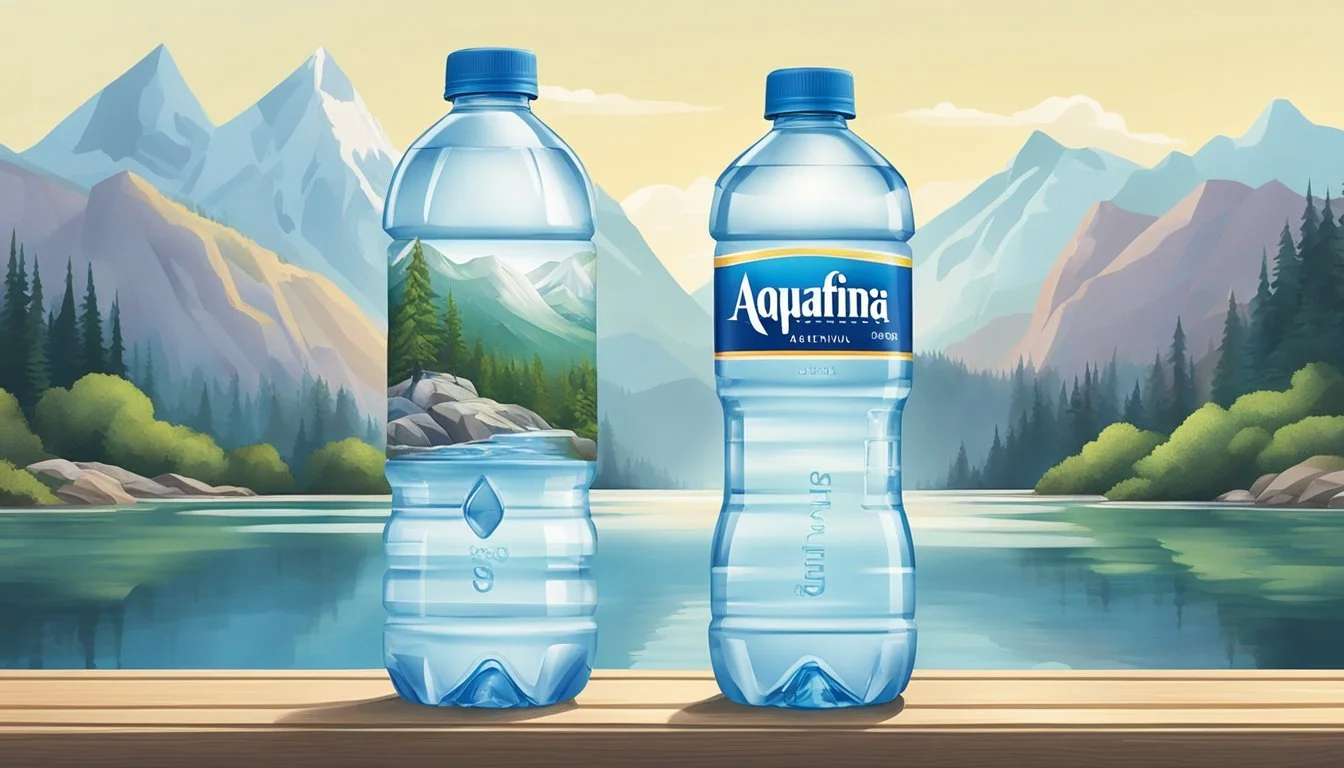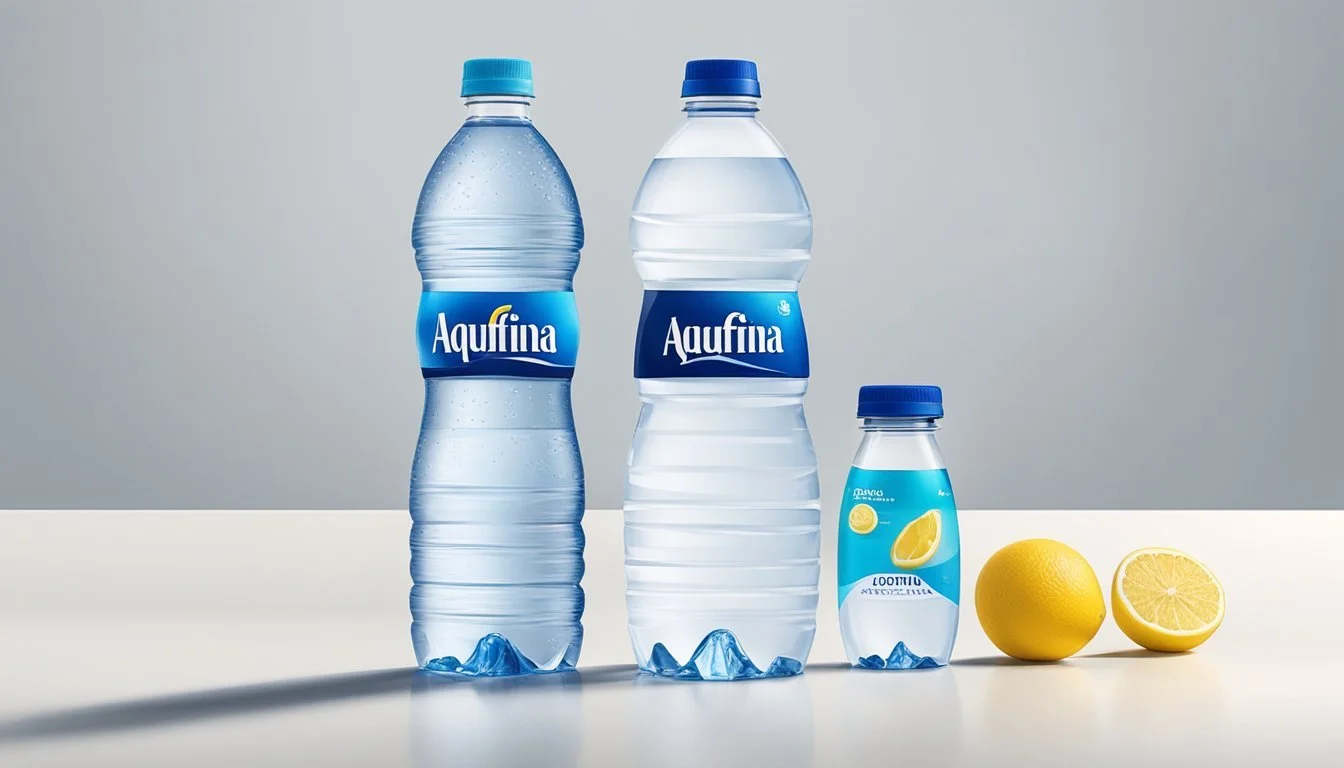Aquafina vs. Essentia
Comparing Quality and Taste in Bottled Water
In the realm of bottled water, consumers are faced with a plethora of choices, each brand claiming to offer something distinct, whether it be in purity, taste, or health benefits. Among the myriad of options, Aquafina and Essentia stand out as prominent contenders in the market. Aquafina, a product of PepsiCo, is purified drinking water that has undergone a rigorous 7-step purification process, known as HydRO-7, designed to remove substances most other bottled waters leave in.
On the other side of the spectrum, Essentia Water prides itself on its ionization process that not only purifies the water but also raises its pH to 9.5 or higher, allegedly contributing to better hydration. Essentia markets itself as an alkaline water, catering to those who are looking for water that goes beyond mere hydration. This attribute of Essentia suggests potential health benefits, particularly to those who subscribe to the belief that alkaline water can help neutralize acid in the body.
As consumers increasingly seek out products that not only quench thirst but also offer additional health benefits, the debate intensifies over which water is better. With bottled water becoming an integral part of people's lives, whether it be for convenience, taste, or health reasons, the choice between Aquafina and Essentia is not just about hydration—it reflects individual preferences and values in health and wellness. Therefore, a comprehensive comparison is crucial for those who are conscientious about what they consume and wish to make an informed decision based on the quality and benefits of the bottled water they choose to drink.
What Is Bottled Water?
Bottled water is a convenient and regulated form of drinking water that comes in various types and undergoes specific safety procedures to ensure its quality.
Types of Bottled Water
Spring Water: This type comes from an underground source and must flow naturally to the earth's surface or be extracted through a borehole. Spring water typically contains a variety of minerals that contribute to its taste and nutritional value.
Purified Water: This category includes water that has been processed to remove chemicals and contaminants. The filtration process may involve reverse osmosis, distillation, or other methods to meet the purity standards. Purified water is not sourced from a specific spring and can include tap water that has been treated.
Regulations and Safety
The Environmental Protection Agency (EPA) sets legal limits on over 90 contaminants in drinking water. For bottled waters, regulation falls under the purview of the Food and Drug Administration (FDA). These regulations ensure that levels of heavy metals such as lead, as well as PFAS chemicals, are below certain thresholds to protect public health.
Manufacturers must adhere to established standards of identity, purity, and, if applicable, mineral content. Regular testing is conducted for the presence of contaminants, and the results must comply with safety benchmarks to ensure the water is fit for consumption.
Bottled Water Brands
In a market saturated with choices, bottled water brands vary widely in source, taste, and marketing strategies, with some leading the pack in sales while others present innovative approaches and aim to disrupt the industry norms.
Market Leaders
Aquafina and Dasani are household names that dominate the bottled water scene, often found in vending machines and store shelves across the globe. Aquafina, owned by PepsiCo, boasts a purification process that includes reverse osmosis. Dasani, a product of The Coca-Cola Company, is known for its addition of minerals for taste.
Other iconic brands include Evian, sourced from the French Alps, and Fiji Water, which draws its product from an aquifer in Fiji. Poland Spring offers spring water originating from Maine. Meanwhile, Voss, with its Norwegian origins and distinct cylindrical bottle, caters to a premium audience.
Nestlé Pure Life, an offering by the world's largest bottled water company, is recognized for its global presence. Ice Mountain, drawing from springs in the heartland of the USA, and Deer Park, with sources in the eastern U.S., also belong to the Nestlé portfolio.
Brand Origin Noteworthy Fact Nestlé Pure Life Multiple global sources Known for wide accessibility Ice Mountain Midwest, USA Marketed as Midwest’s local water Deer Park Eastern USA Touts natural purity from various springs
Emerging Brands
Among emerging brands, Icelandic Glacial stands out with its water being bottled directly from Iceland's Ölfus Spring, known for its natural filtration process. Core Hydration markets itself with perfectly pH-balanced water and a contoured bottle design aimed at hydration on-the-go.
Acqua Panna and San Pellegrino, originating from Italy, cater to a niche audience desiring European spring and sparkling mineral waters, respectively. Mountain Valley, spring water from Arkansas, is appreciated for its long-standing history and association with natural American springs.
Innovative entries include Boxed Water, with their eco-friendly packaging, and LIFEWTR, which emphasizes pH balance and electrolytes for taste. Eternal Water boasts of their naturally alkaline source waters. Zephyrhills is another regional favorite, sourced from Florida springs. Ethos Water is known not just for its water but for its social initiative, providing a portion of its profits to global water access programs.
Brand Source Distinctive Feature Icelandic Glacial Ölfus Spring, Iceland Carbon neutral and naturally filtered Core Hydration Not disclosed pH balanced and packaged for convenience Boxed Water Not disclosed Focus on sustainability with paper-based cartons LIFEWTR Not disclosed Enriches water with electrolytes for taste Eternal Water Various springs in the USA Natural alkalinity from protected sources
Aquafina vs Essentia
When comparing Aquafina and Essentia bottled water brands, consumers generally consider factors such as source and filtration methods, taste, health benefits, and price to determine which product suits them best.
Source and Filtration
Aquafina utilizes public water sources, which then undergo a rigorous purification process. Their proprietary HydRO-7 system is designed to remove substances most other filters miss. Essentia, on the other hand, sources its water from various locations and enhances it with its own proprietary ionization process to achieve alkaline water with a pH level of 9.5 or higher.
Aquafina: Public water sources, HydRO-7 filtration
Essentia: Various sources, alkaline ionization process
Flavor Profile
The flavor of Aquafina is often characterized as neutral and clean, primarily because of its thorough filtration. Essentia boasts ionized alkaline water, which some consumers believe offers a smoother and silkier taste compared to conventional options.
Aquafina: Neutral, clean taste
Essentia: Smooth, silkier taste due to high pH level
Health and Hydration
While both brands offer hydration, Essentia claims superior hydration due to its alkaline nature and a blend of electrolytes for taste; including calcium chloride and magnesium sulfate. It suggests that the added electrolytes can provide a more optimal hydration experience. Aquafina does not have added electrolytes, which may affect its hydration potential for some consumers.
Aquafina: Effective hydration, no added electrolytes
Essentia: Enhanced with electrolytes, alkaline water with a pH of 9.5 or higher
Price Comparison
Essentia is typically priced higher than Aquafina, reflecting its alkaline properties and added electrolytes. Consumers often find that Aquafina is a more budget-friendly option that still provides clean, purified water.
Aquafina: More affordable
Essentia: Higher price point, reflects added enhancements
Water Quality and Composition
When evaluating bottled waters like Aquafina and Essentia, factors such as mineral content and pH levels offer insight into their overall quality and health benefits. Consumers often base their choices on these criteria, seeking either pure hydration or enhanced mineral intake.
Mineral Content
Aquafina is known for its purity; it is demineralized and boasts a process of reverse osmosis and ozone purification. As a result, it typically contains no significant levels of minerals or electrolytes, as they are filtered out to provide a clean, crisp taste.
Essentia, on the other hand, while also purified, is enhanced with electrolytes. It is infused with a blend of calcium, magnesium, and other essential minerals post-purification, aiming to improve taste and offer additional health benefits to the consumer.
pH Levels
The pH level of a bottled water reflects its acid-alkaline balance and can impact its taste and potential health benefits. Aquafina, with its purified composition, maintains a neutral pH level around 7.0, reflecting the clean, no additive nature of the water.
Essentia stands out with its high pH level, typically over 9.0, which places it into the category of alkaline water. This higher pH level is the result of adding a blend of alkaline electrolytes and the removal of acidic ions, which can work to neutralize the acid in a consumer's body.
Environmental Impact
The production process and end-of-life disposal of bottled water both have significant ecological footprints. Understanding the environmental load of bottled water brands such as Aquafina and Essentia helps highlight the broader issue of sustainability in consumer choices.
Bottled Water Production
Aquafina, a product of PepsiCo, is purified bottled water. Its production involves several stages: sourcing, purification, bottling, and distribution. The purification process, while ensuring safety and consistent taste, is energy-intensive and contributes to carbon emissions. In addition, transporting Aquafina from production facilities to markets worldwide requires fossil fuels, adding to its carbon footprint.
Essentia prides itself on providing ionized alkaline water with a high pH level. The ionization process, apart from purification, requires additional energy input, which can exacerbate its environmental impact. However, Essentia often markets its product in larger bulk packs, which might reduce the frequency of purchases and potentially lower the energy spent per liter of water consumed.
Production Factors to Consider:
Energy consumption in water treatment
Greenhouse gas emissions from transportation
Impact of sourcing water from the environment
Recycling and Reusability
Both Aquafina and Essentia utilize plastic bottles for their water, contributing to waste and pollution if not properly recycled. Plastic bottled water generates significant solid waste, and while these bottles are recyclable, the rate of recycling remains low. Ineffective waste management systems can lead to these bottles polluting landfills and oceans.
The introduction of reusable water bottles has been an effort to mitigate the environmental impact of single-use plastics. A move towards using these reusable alternatives or opting for carbonated and mineral waters in glass bottles, which have a higher recycling rate, can make a considerable difference in reducing the environmental toll.
Considerations for End-of-Life:
Recycling rate of bottles
Pollution from improper disposal
Shifts in consumer behavior towards reusable alternatives
Consumer Preferences
When it comes to bottled water, consumers often have strong preferences based on taste and brand loyalty. These preferences can be influenced by factors such as the water's mouthfeel, presence or lack of aftertaste, and the reputation of the brand.
Taste and Aftertaste
Consumers frequently report that Aquafina, produced by PepsiCo, has a smooth taste, with some noting a lack of distinct aftertaste, which can be attributed to Aquafina's rigorous purification process. Essentia, on the other hand, boasts a water taste that is often described as crisp, primarily due to its alkaline nature. Unlike Aquafina, which aims for a pure and neutral flavor profile, Essentia's higher pH level can impart a subtle taste that some consumers prefer for its mouthfeel and aftertaste characteristics.
Aquafina:
Taste: Smooth, neutral
Aftertaste: Minimal to none
Essentia:
Taste: Crisp, slightly alkaline
Aftertaste: Noticeable, but pleasant
Brand Loyalty
Brand loyalty plays a significant role in consumer preferences. Aquafina, being associated with the global brand Coca-Cola, benefits from a strong brand recognition and widespread availability. Essentia, while not as large as Aquafina, has developed a loyal following due to its positioning as a premium alkaline water. It challenges other premium brands like Smartwater, which is also under the Coca-Cola umbrella, and LifeWTR, produced by PepsiCo's rival, Nestle. Consumers who prioritize health and hydration claims often show loyalty to Essentia, while those who trust in established brands and are perhaps using products such as the Brita filter or Ice Mountain Natural Spring Water for their daily hydration might lean towards Aquafina.
Aquafina:
Associated with: Coca-Cola
Preferred by: Consumers valuing brand trust and availability
Essentia:
Market Position: Premium alkaline water
Preferred by: Health-conscious consumers and hydration enthusiasts
Health Considerations
When comparing Aquafina and Essentia bottled waters, one must consider how effectively they hydrate and the potential presence of contaminants.
Hydration and Electrolytes
Aquafina is a brand of purified water that undergoes a rigorous filtration process, including reverse osmosis. It is known for its purity but does not contain electrolytes, which are essential for hydration. On the other hand, Essentia water is alkaline ionized water. It not only hydrates but also includes a blend of electrolytes for taste. These electrolytes, such as sodium, potassium, calcium, and magnesium, can aid in maintaining the body's proper balance of fluids.
Water Contaminants
Bottled water is expected to be free from contaminants. Aquafina prides itself on its Filtration Process which includes:
Charcoal filtering
Removing heavy metals and water contaminants like arsenic, lead, and mercury
UV light treatment
In contrast, Essentia water, which starts with water from a municipal source, is enhanced through a proprietary process that includes:
Vapor-distilled water
Additional steps that remove impurities and PFAS chemicals
Ionization to raise pH levels
Both brands meet the stringent standards set by the FDA for bottled water, which ensures that the products are generally free from harmful levels of contaminants.
Innovations in Bottling
When comparing Aquafina and Essentia, it's critical to understand the technological advances each brand employs in their filtration and packaging processes.
Filtration Techniques
Aquafina utilizes a filtration process consisting of reverse osmosis, ultraviolet light, and ozonation to ensure purity. This method removes impurities and contaminants, resulting in water that's consistently clean and clear.
On the other hand, Essentia stands out with its proprietary ionization process, where water undergoes not only microfiltration, reverse osmosis, and ultraviolet exposure but also electrolysis. Essentia claims this process enhances hydration by creating vapor-distilled water with an ideal pH of 9.5, making it a distinctly alkaline offering.
Aquafina:
Reverse Osmosis
Ultraviolet Light treatment
Ozone disinfection
Essentia:
Microfiltration
Reverse Osmosis
Ultraviolet Exposure
Electrolysis (raising pH)
Packaging Advances
The packaging of bottled water has evolved, with sustainability being a focal point. Aquafina has traditionally been known for its plastic bottles, but like many companies, it is exploring ways to reduce plastic use and increase recyclability.
Essentia, apart from its bottled version, is stimulating the market with alternatives like boxed water and collaborations encouraging consumers to use reusable water bottles. These efforts contribute not only to environmental sustainability but also to adapting consumer habits towards more sustainable practices.
Aquafina:
Reduction in plastic use
Emphasis on recyclability
Essentia:
Introduction of boxed water options
Promotion of reusable water bottles
Conclusion
When choosing between Aquafina and Essentia bottled waters, consumers are often looking for quality, taste, and the health benefits each brand purports to offer. Aquafina is known for its pure, clean taste, achieved through a rigorous purification process. It is a reliable choice for everyday hydration and is widely available.
Essentia, on the other hand, positions itself within a niche market focusing on alkaline water enthusiasts. With a pH of 9.5, Essentia caters to those seeking water with allegedly higher pH values for health purposes, though experts suggest that the benefits of alkaline water are largely understudied.
In terms of popularity among water drinkers, both brands have their loyal customer base. Essentia often appeals to the health-conscious segment, while Aquafina is favored for its accessibility and affordability.
Choosing the "best bottled water" is largely subjective and varies based on individual needs and preferences. It is essential to consider what factors are most important, whether it's the water's mineral content, sourcing, purpose, or price point.
Lastly, when consulting experts on bottled water, many will agree that the most important aspect is safety and meeting the regulation standards. Both Aquafina and Essentia meet these requirements, thus proving to be safe choices for consumers.
Key Aspects Aquafina Essentia Taste Pure, clean Smooth, higher pH pH Level Neutral Alkaline (9.5 pH) Target Audience General consumers Health-conscious Price & Availability Affordable, widely available Pricier, niche market
Consumers should weigh these aspects to make an informed decision based on their hydration needs.





